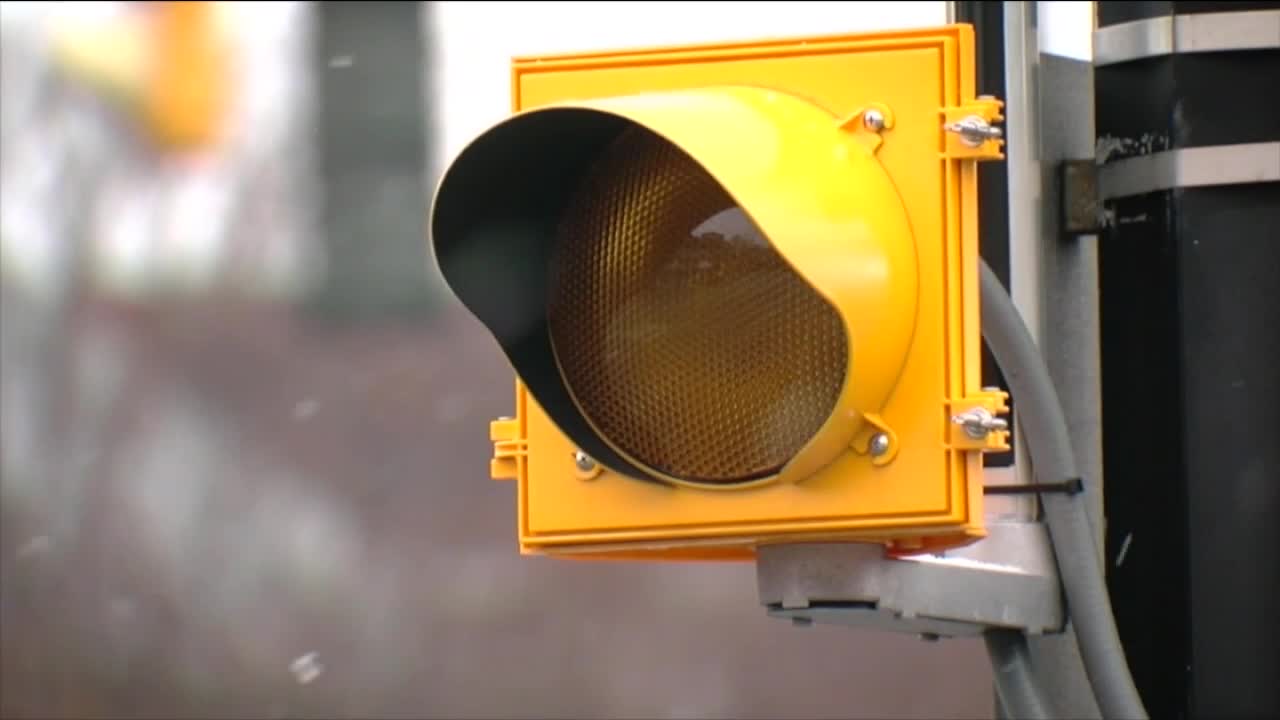BUFFALO, N.Y. (WKBW) — Peter Rizzo is a certified urban planner, certified fraud examiner, and certified government auditor — so, he has a little bit of experience looking at best governmental practices.
He says the City of Buffalo needs to drop the school zone safety program.
In a prepared report, which will be released Tuesday at 1pm, he lists seven findings after he spent months independently reviewing 911 call data from Buffalo police as well as information provided by the Parking Violations Bureau.
Here are the highlights:
- FINDING 1: Half of the City’s speed camera sites have among the lowest School Zone crash rates in Buffalo.
- FINDING 2: Nearly all City speed camera sites have among the highest School Zone traffic rates in Buffalo.
- FINDING 3: The City has disproportionately targeted high-poverty, minority neighborhoods for speed cameras.
- FINDING 4: Persons living nearest to Buffalo’s speed cameras receive the most violations.
- FINDING 5: The City’s School Zone signage violates City and State laws and Federal regulations.
- FINDING 6: Speed is not a leading cause of weekday daytime pedestrian crashes in Buffalo.
- FINDING 7: The City has failed to take basic, non-punitive action to improve child safety under the School Zone Safety Program.
Rizzo plans to present his findings to the Buffalo Common Council Tuesday as well as provide eight recommendations to the council which are headlined by his recommendation to “terminate the speed camera ‘demonstration program”.
It’s not likely to happen as the mayor has insisted he will not end the program.
Buffalo mayor Byron Brown has refused to take questions from reporter Madison Carter on the cameras since our original report back in October of 2020.
Instead he sends statements via his spokesperson about how the cameras are in place for the safety of children.
Rizzo doesn’t think that’s necessarily true, though after reviewing the data.
“I found the city did not concentrate the cameras in the school zones that have the highest crash rates, instead most of them were placed in the school zones that have the highest daily traffic counts.”
Parking commissioner Kevin Helfer does continue to take calls from 7 Eyewitness News and responds to every inquiry.
He told us he is reviewing the data, but “one accident is one too many.”
Helfer said he spends hours each day in the school zones evaluating them for necessary adjustments.
He gave an update on where the camera program stands after all 20 zones went into an “acclimation period” last Monday.
That means no tickets are being issued and no pictures of vehicles are taken but warning beacons are active to help warn drivers that at the beginning of March they will be ticketed for driving too fast in these school zones.
“People have become very familiar with the beacons which is slow down and observe the speed limit,” he said.
The school zone on Bailey Avenue, which at one point in the program was ticketing the most drivers, ended the initial live period in December with a 96% compliance rate.
Rizzo’s analysts found that cameras were disproportionately impacting poor, minorities in the city because of their location
“Out of 91,000 (tickets) 44,606 of those went to zip codes in the City of Buffalo,” he said. “And 10,588 went to a single zip code - 14215.”
That zip code is on Buffalo’s upper East Side — Helfer, again before reviewing the report fully, said the data does show that nearly half tickets are still being issued to drivers in the suburbs outside of the city’s poorest neighborhoods.
“What I’ve found from the research that I’ve done most recently and my findings: there is no way to fix the damage that is being done to our community by these cameras,” said Rizzo.
Rizzo intends to question the city’s legislative committee on the need for speed cameras when his data found that speeding is not the leading cause of crashes in the City of Buffalo.
In fact, according to data from the University at Albany’s Institute for Traffic Safety and Management and Research — speed doesn’t even rank in the top five causes of crashes. It comes in at number eight, making up just 4% of the causes of crashes.
“Buffalo has a poverty rate of 28.8%, that is more than twice the national average,” said Rizzo. “You don’t implement an enforcement program that penalizes residents when you have that kind of poverty rate and low incomes.”
When 7 Eyewitness News tried to take these questions to Mayor Byron Brown his spokesperson said his schedule could not accommodate an interview.




